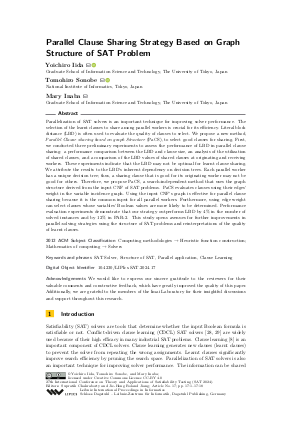LIPIcs.SAT.2024.17.pdf
- Filesize: 1.64 MB
- 18 pages

 Creative Commons Attribution 4.0 International license
Creative Commons Attribution 4.0 International license


























Feedback for Dagstuhl Publishing